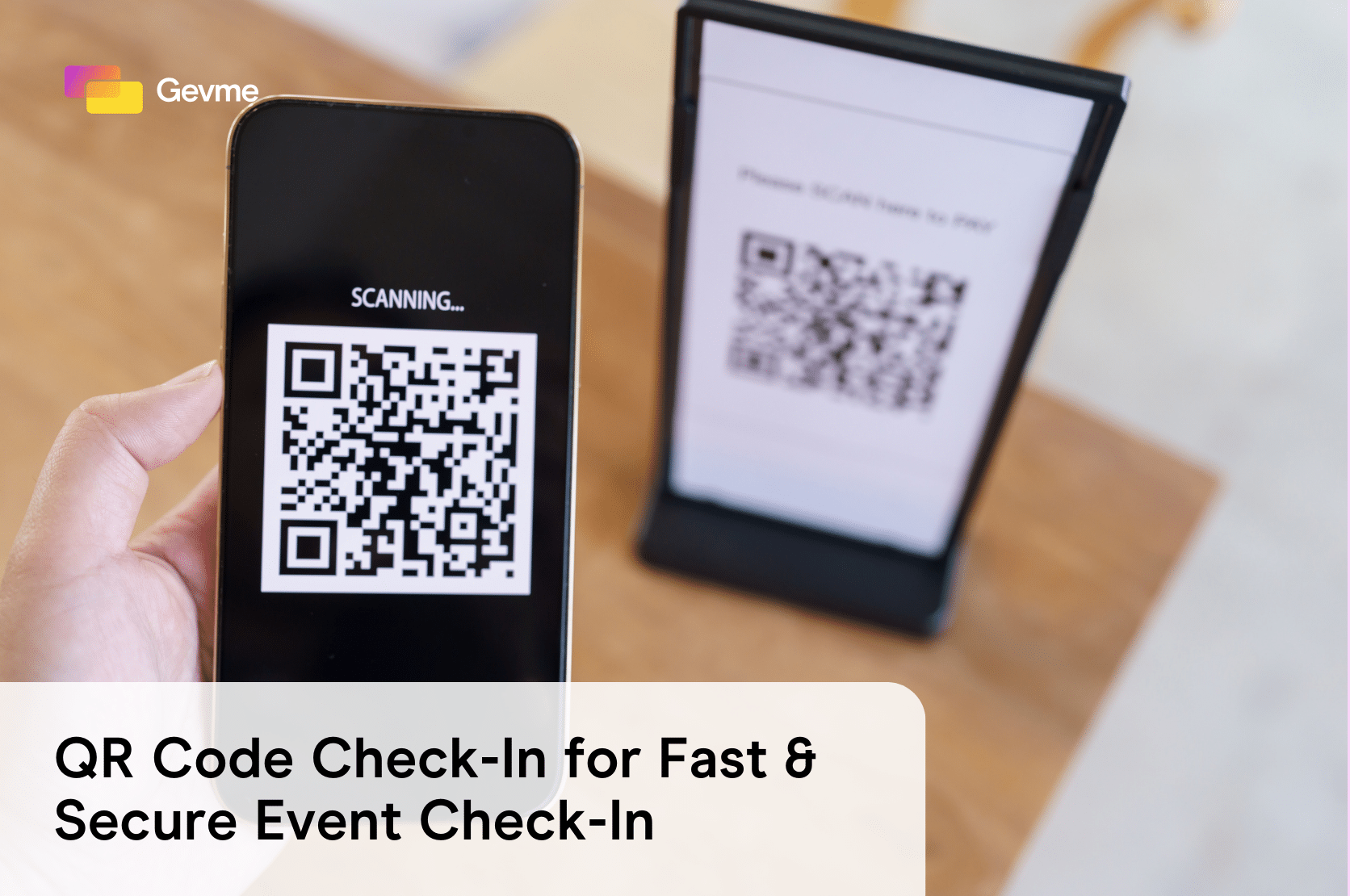The scope of virtual events has moved beyond the ability to remotely connect with your audience. Now, it’s also about offering a virtual experience that attendees would love coming back to and talking about it among their peers and community.
And with that arises the need to personalise the virtual event experience. This makes it even more engaging for your attendees to stay connected to the agenda, participate actively and gain value.
It’s evident that virtual events are everywhere today. To cut through the noise and stand out, you need to leverage data to deliver unforgettable event experiences.
So to help you produce such virtual event experiences, we’ve listed the most important virtual event benchmarks you need in 2022. These benchmarks are based on data from 500 virtual events powered by Gevme and hosted by the top companies around the world. These virtual events were attended by over 150,00 global attendees. Further details regarding the methodology used for gathering this data are available in our report.
Here’s a glimpse of all the virtual event statistics that we’ve covered:
- When should online registration close for a virtual event?
- What is a virtual event’s overall average attendance rate?
- How many people view an event digitally after it’s over?
- What is the shelf life of an event’s digital content?
- How much time do people spend watching a video on demand?
- How much of a video on demand do people complete?
- How much time do people spend watching a live stream?
- How much of a live stream do people watch?
- What is the most popular day for conducting events?
- At what time of the day are people most active?
Let’s take a closer look at each of them.
When should online registration close for a virtual event?
After spending months or weeks planning your event, you’d want more people to register for the event. To do this, you may launch some marketing campaigns to promote your event to get more people to sign up for it.
But just a day or two before the virtual event, many planners choose to close event registration. Interestingly, our data shows that not doing so can move the needle around the virtual event registrations.
Keeping the registration open on the day of the virtual event can lead to an additional 18% of people signing up for it – a significant proportion of attendees that’s not worth missing.
In addition to that, if the registration is left open after the virtual event is over, it’s likely for 10% more people to sign up for it — an audience that’s all in to consume your event on demand if made available.
Clearly, virtual event sign-ups are majorly impacted by simply keeping the registration open for attendees.

What is a virtual event’s overall average attendance rate?
It’s finally the day of your virtual event and once it’s time for it to start, you see attendees join in. The number of attendees keeps rising until you realise that it’s not as many as the number of sign-ups that you had received.
However, the good news is that even if the number of attendees that turn up for your virtual event is at least half the number that had registered, then you have hit the industry benchmark. That’s because our data shows that at a virtual event, the overall attendance rate is 55%.
While attendance of 55% may seem low, what also needs to be considered is that virtual events have the potential to be made available on-demand. So, even if someone has registered for it and has been unable to attend it, they can simply tune into it if you make it available on-demand.

How many people view an event digitally after it’s over?
A few years ago, no one could have imagined that they could revisit an event sometime in the future. Thanks to event technology, it’s possible now to skim, skip or watch the virtual event any time and anywhere if made available on-demand.
So how many people are likely to favour watching an event digitally? We found that over half of the people (56%) would.

We also asked the same question to people who have not attended the virtual event. And interestingly found that 15% of this audience said that they view the event digitally for the first time after it is over.

What is the shelf life of an event’s digital content?
You’ve hosted an event and even made it available on-demand.
But for how long will your audience consume this content?
For starters, the shelf life of your event content is 46 days — implying people’s interest in revisiting such content even after a month of the virtual event.
What’s worth noting here is that an event’s digital content can be repurposed in multiple ways – videos, blogs, podcasts and stand-alone social media posts. Such content can be used to constantly stay in touch with your audience and keep providing them with valuable information.

How much time do people spend watching a video on demand?
Of the many benefits offered by virtual events is the fact that anyone can attend it from anywhere. Even if they are unable to attend it, watching it on-demand is also a big advantage.
When looking deeper into the watching habits of people when it comes to on-demand event content, we found that the average time people spend watching an event video on demand is 19 minutes.
So making the first 19 minutes of your event content interesting can make or break your audience’s attention the next time they watch this content on-demand. As an event planner, it’s worth looking into this stat and understanding how you can keep your audience hooked to your content.

When looking at on-demand content of varying timeframes, we found that the average watch time of a 40-minute session is 15 minutes, while that of a 100-minute session is 14 minutes. The highest average watch time observed is 30 minutes which is noticeable in sessions with a length of 110 minutes (1 hour 50 minutes).
How much of a video on demand do people complete?
Our data science team also went a little further to look at how much of a video on demand people complete. The data uncovered shows that the highest average completion rate is observed on videos with a watch time of 20 minutes at 41.43%.
So keeping your on-demand content up to 20 minutes can be the best to garner the attention of your audience.
Overall, there is a gradual decrease in the average completion rate with an increase in session time.

How much time do people spend watching a live stream?
It’s no secret that live streaming a virtual event is a challenging task. A lot of planning, research and rehearsals with your speakers are required to ensure that everything goes right.
With all the efforts that you may put in to make your live streaming perfect, how much time are people willing to watch it?
Our data indicate that the average watch time for a live session of 100 minutes (1 hour 40 minutes) is 67 minutes (1 hour 7 minutes). A live session of 150 minutes (2 hours and 30 minutes) is likely to garner an average watch time of 100 minutes (1 hour 40 minutes).
Simply put, even if your live streams extend for a longer period of time, people are likely to invest their time watching it. However, it’s important to have a great agenda and excellent event content to retain your audience.

How much of a live stream do people watch?
We also dug deep to look at how much of an event’s live stream are people likely to watch. Our data shows that the average completion rate is 45%.
It’s worth noting that sessions running for 160 minutes (2 hours and 40 minutes) receive maximum engagement as the average completion rate of these sessions is 97.95%. This again validates that people are ready to watch longer live streams given you have a lot of exciting and insightful content to offer.

What is the best day for hosting virtual events?
So you have everything covered — the event agenda, speakers, exhibitors and sponsors. But you aren’t too sure which day to pick. Well, no more.
We looked at the attendance rate of virtual events on each day of the week. And we found that Tuesday is the best day to host a virtual event as the attendance rate on this day is 11.30%. Weekends should generally be avoided for hosting business virtual events.

What is the best time to host a virtual event?
As an event planner, being mindful of your attendee’s time is non-negotiable. You have to plan your virtual events keeping in mind when your audience is most likely to be active.
Our data shows that the best time to host a virtual event is between 10 am to 2 pm — with 10 am being the busiest time. There’s a gradual decrease in people’s activeness at a virtual event after 2 pm.

Looking ahead
It shouldn’t come as a surprise that virtual events are becoming increasingly competitive as more and more enterprises today are leveraging them to connect with their audience.
Keeping up with the benchmarks mentioned above is how you can evaluate the effectiveness of your virtual events and take steps to improve them one at a time. Our free report explains each of these benchmarks in greater detail along with insightful tips from Gevme experts.
With platforms like Gevme, you can now build virtual events that are fully customisable and unique. What’s more, you can take a step beyond the convention and adopt the omnichannel event strategy with Gevme to grow, engage and monetise your event audience.
Get started with your omnichannel event strategy with Gevme.
Watch the on demand version of our Virtual Events Benchmark 2022 event to know from Gevme experts how to use these insights to improve your events.








